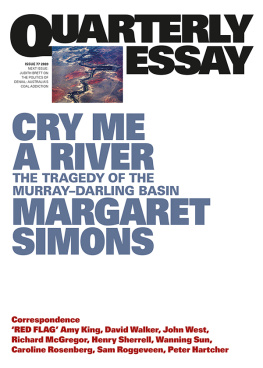This edition is published by PICKLE PARTNERS PUBLISHINGwww.picklepartnerspublishing.com
To join our mailing list for new titles or for issues with our books picklepublishing@gmail.com
Or on Facebook
Text originally published in 1993 under the same title.
Pickle Partners Publishing 2015, all rights reserved. No part of this publication may be reproduced, stored in a retrieval system or transmitted by any means, electrical, mechanical or otherwise without the written permission of the copyright holder.
Publishers Note
Although in most cases we have retained the Authors original spelling and grammar to authentically reproduce the work of the Author and the original intent of such material, some additional notes and clarifications have been added for the modern readers benefit.
We have also made every effort to include all maps and illustrations of the original edition the limitations of formatting do not allow of including larger maps, we will upload as many of these maps as possible.
JOINT OPERATIONS IN THE JAMES RIVER BASIN, 1862-1865
by
LCDR David K. Zatt, USN
ABSTRACT
This study is an analysis of Union joint operations in the James River Basin from 1862 to 1865. Specifically the contributions made by the Union Navy during the battles of this period.
It begins with an analysis of the Peninsula Campaign conducted by Major General George B. McClellan and Rear Admiral Louis M. Goldsborough in 1862 and concludes with the Union forces entry into Richmond in April 1865.
The Union Navy played a significant role in shaping the outcome of the battles for control of the James River Basin and the eventual capture of Richmond. The Navys control of the river allowed Lieutenant General Grant to maintain his main supply base well forward in the theater. This enabled Grant to rapidly maneuver and resupply his forces.
The study provides lessons on the difficulties of joint operations and the requirements to ensure success in the joint arena. Furthermore, it provides todays United States military with a view of riverine and mine warfare operations and the implication of allowing these warfare areas to decay.
CHAPTER ONEINTRODUCTION
This study is an analysis of the Union Navys participation in the battles that took place in the James River Basin from 1862 to the fall of Richmond in April 1865. This examination provides important lessons for understanding the concerns and problems which may arise in todays joint and combined arena. Furthermore, it shows the intrinsic difficulties encountered in conducting cooperative operations without unity of command or joint doctrine. The analysis will show the inter-service requirements for conducting riverine operations. It will also illustrate the inherent difficulties associated with conducting operations in a mine environment. In order to highlight these areas and the contributions made by the Navy during this period in the James River Basin, the analysis focuses on several basic questions:
1. How involved was the Navy in the planning and execution of the battles? What was the commitment of the Navy toward the James River battles? Was this involvement substantial or superficial to the total operation?
2. How important to the outcome of the battles was the contribution of the Navy? If the Union had altered its import of the Naval portion of their order of battle, would the initiative have shifted?
3. How well did the Navy integrate into the general scheme of battle? What was the assistance that the Navy rendered in protection of the Union Army both on and off the waterways? What were the problems that each service encountered interfacing with a separate organization to achieve the common goal?
The Navy did in fact play an important role in the outcome of the American Civil War: from the blockading of ports to the battles upon the inland rivers, the Navy supported the Armys efforts throughout the war. In a letter written 26 August 1863, to Union men from his hometown, Springfield, Illinois, President Lincoln praised the achievements of the Navy:
Nor must Uncle Sams web-feet be forgotten. At all the watery margins they have been present. Not only on the deep sea, the broad bay, and the rapid river, but also up the narrow, muddy bayou, and wherever the ground was a little damp, they have been and made their tracks. Thanks to all. {1}
Unlike todays Defense Department which controls the United States military organization, the military during the Civil War was split into two separate organizations: the Department of War, and the Department of the Navy. In the James River Basin the Civil War Naval forces fell under the command of the North Atlantic Blockading Squadron. The North Atlantic Blockading Squadron had jurisdiction over the waters bounding North Carolina, Virginia, Maryland, and all associated tributaries. The James River Squadron (or James River Flotilla), established in 1862, was a subordinate command of the North Atlantic Blockading Squadron and had domain over the James River and its tributaries.
Figure 1. Union Command and Control Organization
The Department of the Potomac (or Army of the Potomac) was constituted in August 1861 and consisted of the Departments of Washington, Northeastern Virginia, and the Shenandoah. Included within its limits were the states of Delaware, Maryland, the District of Columbia, and that part of Virginia east of the Allegheny Mountains and north of the James River, except for Fort Monroe and sixty miles of the country around it which fell under the command of the Department of Virginia. {2} In April 1862 when Major General George B. McClellan commenced his Peninsula Campaign, the Departments of the Shenandoah and the Rappahannock were removed from the Department of the Potomac command. In July 1863 the Department of Virginia expanded to include portions of North Carolina, and its name changed to the Department of Virginia and North Carolina.
The Civil War era military system did not allow for simplicity of command and control by a single commander-in-chief as is common today. Sister services cooperation in the theater of operations had to be approved by both departments instead of being dictated by the commander-in-chief. Requests for assistance often required long lead times as the communications went up one chain-of-command and then down the other chain-of-command. Cross chain communications normally did not normally occur below the level of the area commander and occasionally were made at the Secretary level. This lack of command and control by a single entity allowed for departmental rivalry to interfere with operations. During the Civil War, the political rivalries occasionally became a significant hindrance to operations.










